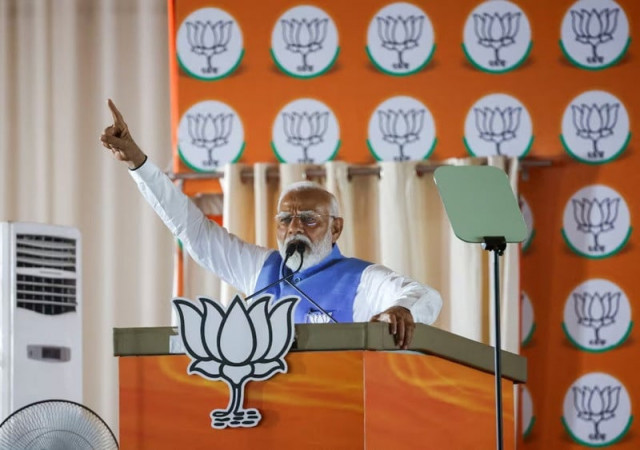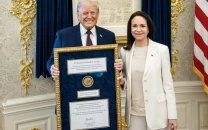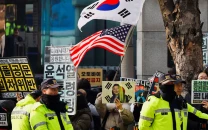Old guard dominates Modi’s cabinet
Signals broad policy continuity in BJP-led govt

Indian Prime Minister Narendra Modi unveiled on Monday his coalition government after a surprise election setback lost his Hindu-nationalist party an overall majority.
The 71 members of his government took the oath of office after Modi on Sunday, with 11 posts going to coalition allies who extracted them in exchange for their support -- including five in the top 30 cabinet posts.
But Modi’s Bharatiya Janata Party (BJP) old guard dominate the list, with key posts unchanged -- signalling broad policy continuity. That includes BJP loyalists Rajnath Singh, Amit Shah, Nitin Gadkari, Nirmala Sitharaman and S Jaishankar -- the defence, interior, transport, finance and foreign ministers, respectively, staying on in their jobs.
Powerful BJP president Jagat Prakash Nadda was named as health minister. Posts given to coalition leaders include civil aviation, to Kinjarapu Rammohan Naidu of the Telugu Desam Party (TDP), the BJP’s biggest ally.
Other coalition posts include smaller ministries such as heavy industry, food processing and fisheries.
There are no Muslim lawmakers among his third-term lineup, unlike his past two governments, both formed after his right-wing BJP won a majority.
Modi’s decade as premier has seen him cultivate an image as an aggressive champion of the country’s majority Hindu faith, worrying minorities including the country’s 200-million-plus Muslim community.
“Honoured to serve Bharat”, Modi wrote after he was sworn into office, using the country’s name in Sanskrit, a word dating back to ancient Hindu scriptures.
He held his first cabinet meeting Monday evening, where plans were approved for assistance for 30 million new homes for poor families.
Modi had been forced into quick-fire talks with coalition partners in the National Democratic Alliance (NDA), whose 293 seats guaranteed him the parliamentary numbers to govern.
Earlier on Monday, Modi took his first action, approving the latest tranche of a cash handout for 93 million farmers.
Two-thirds of India’s 1.4 billion people draw their livelihood from agriculture, which accounts for nearly a fifth of the country’s gross domestic product.
Despite the BJP dominance in the cabinet, the coalition means Modi must seek greater consensus in this parliament.
The TDP from Andhra Pradesh is led by veteran politician Chandrababu Naidu, who began his political career with Congress, the biggest opposition party to the BJP.
The next biggest, the Janata Dal (United) party of Bihar, is headed by Nitish Kumar, who has a history of frequently changing his allegiance to and from the BJP to suit his interests.
He was one of the founding members of the opposition alliance that competed against Modi in this year’s election -- but switched sides just weeks before the vote began.
Seven of the 71 ministers are women, with two in the top cabinet.
Modi’s chief rival Rahul Gandhi was nominated on Saturday to lead India’s opposition in parliament, after he defied forecasts to help the Congress party nearly double its seats.
No date has been set for the opening of parliament, but Indian media have reported the new session is expected to begin next week, when the speaker will be elected.



















COMMENTS
Comments are moderated and generally will be posted if they are on-topic and not abusive.
For more information, please see our Comments FAQ